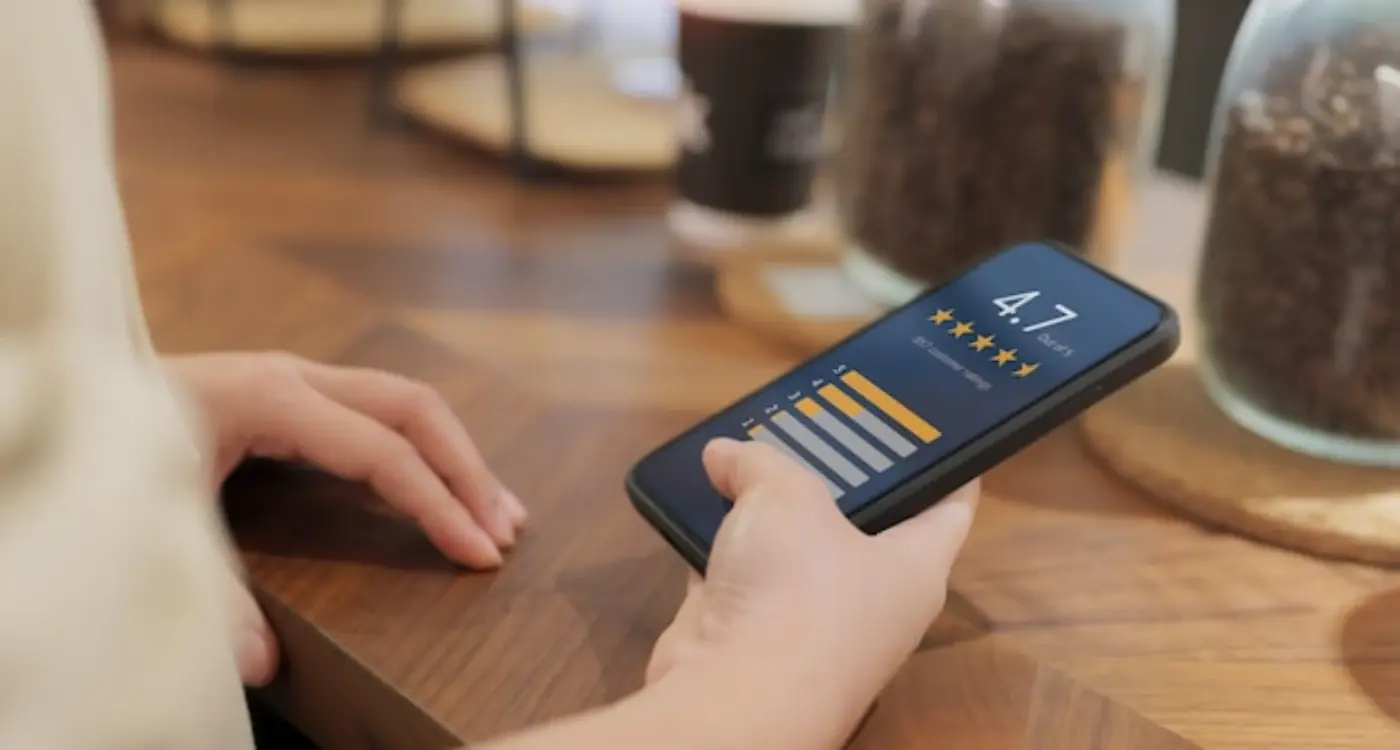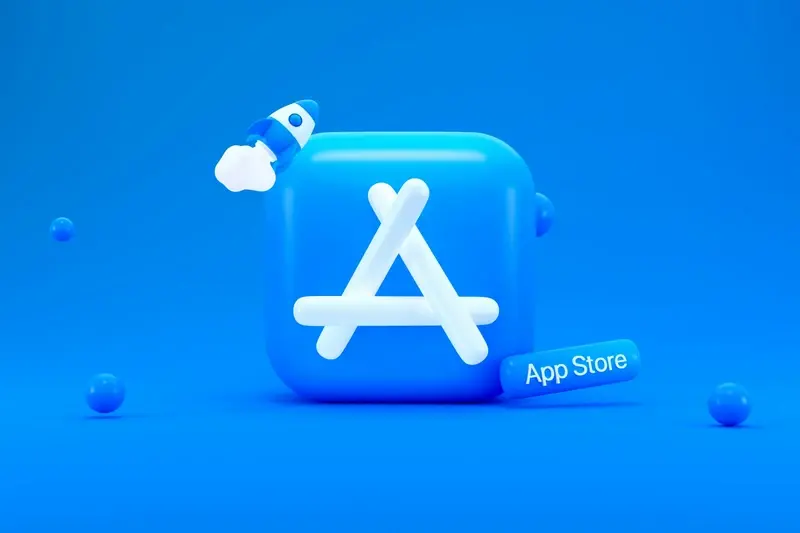Will My Customers Actually Download And Use My App?
Did you know that 80% of mobile apps are deleted within three days of being downloaded? Three days. That's barely enough time to remember you installed the thing, let alone get any real value from it. If those numbers don't make you pause and think about your app strategy, I'm not sure what will.
The mobile app market has become ruthlessly competitive—there are millions of apps fighting for attention on app stores, and users have become incredibly picky about what deserves precious space on their phones. App user adoption isn't just about getting people to download your app anymore; it's about creating something they'll actually open, use, and keep coming back to.
The difference between a successful app and a forgotten one often comes down to understanding human behaviour rather than having the flashiest features
Throughout this guide, we'll explore the real reasons behind customer app usage patterns and what drives mobile app engagement. We'll look at why some apps achieve impressive download rates only to see users disappear, whilst others build loyal communities that stick around for years. Most importantly, we'll give you practical strategies to improve your chances of creating an app that people genuinely want to use—not just download once and forget about.
Understanding Why Apps Fail—The Psychology Behind User Behaviour
After eight years of building apps, I can tell you that most failures aren't technical problems—they're people problems. We spend months perfecting features and polishing interfaces, but forget that behind every download is a real person with real expectations. And those expectations are shaped by psychology, not programming.
People make decisions about your app in seconds, not minutes. Their brains are constantly filtering information, looking for shortcuts to make quick judgements. If your app doesn't immediately solve a problem they recognise, or if it feels too complicated, they'll delete it without a second thought. It's not personal—it's just how our minds work.
The Main Reasons Users Abandon Apps
- The app takes too long to load or crashes frequently
- The purpose isn't clear within the first few screens
- Too many steps required before seeing any value
- The interface feels unfamiliar or confusing
- Push notifications become annoying rather than helpful
What's interesting is that users rarely give feedback when they leave—they simply disappear. This means you need to understand their behaviour patterns before they reach the breaking point, not after.
What Makes People Download Apps in the First Place?
After working with hundreds of app projects, I've noticed something interesting—people don't download apps because they're bored or looking for something new to try. They download apps because they have a problem that needs solving, right now. It might be that they're hungry and need food delivered, lost and need directions, or they want to chat with friends. The key word here is need, not want.
The most successful apps I've worked on solve what I call "pocket problems"—issues people face when they're out and about with just their phone. These problems are usually urgent, personal, and can't wait until they get home to their laptop. Banking apps work because people need to check their balance immediately. Uber works because people need a ride right now. Instagram works because people want to share moments as they happen.
The Three Download Triggers
Through analysing app download rates and user behaviour, I've identified three main triggers that make people actually hit that download button:
- Someone they trust recommended it to them personally
- They have an immediate problem the app promises to solve
- They see others using it and don't want to miss out
Most people discover apps through word-of-mouth, not app store browsing—so make sharing your app as easy as possible for existing users.
What's interesting is that people rarely download apps just because they look nice or have clever features. They download them because there's something specific they need to do, and your app appears to be the solution. This is why understanding your users' problems is far more important than perfecting your app's design.
The Critical First Impression—Onboarding That Actually Works
You've got someone to download your app—brilliant! But here's the thing that might surprise you: getting the download is actually the easy part. What happens in the next thirty seconds will make or break your entire app. I've watched countless apps lose 80% of their users before they even see the main screen, and it's heartbreaking because most of these failures could have been avoided.
The onboarding process is where users decide if your app is worth their time. Think about it—people are impatient, they're probably distracted, and they have zero emotional investment in your app yet. If you throw up a wall of registration forms or bombard them with feature explanations, they'll delete your app faster than you can say "welcome screen".
What Actually Works in Onboarding
Good onboarding isn't about showing off every feature you've built; it's about getting users to their first moment of value as quickly as possible. Skip the lengthy tutorials and focus on these key elements:
- Let users explore before asking for personal information
- Show real value within the first minute
- Keep sign-up steps to an absolute minimum
- Use progressive disclosure—reveal features gradually
- Make it clear what benefit users get from each step
The Three-Screen Rule
Here's something I've learned from years of testing: users should understand your app's core value within three screens maximum. Any longer and you're testing their patience. The best apps I've worked on get users doing something meaningful—not just reading about it—within seconds of opening.
Keeping Users Coming Back—Engagement Strategies That Matter
Getting someone to download your app is one thing—keeping them using it is a completely different challenge. I've watched brilliant apps disappear into obscurity because they forgot about mobile app engagement after launch day. The numbers don't lie: most people try an app once and never open it again. That's just the reality we're working with.
Push Notifications That Don't Annoy
Push notifications are your direct line to users, but they're also the fastest way to get deleted. The secret is timing and relevance. Send too many and people switch them off; send boring ones and they ignore you completely. Focus on notifications that genuinely help users—order updates, personalised reminders, or content they actually asked for.
The best engagement strategy is the one users don't even notice because it feels so natural
Creating Habits, Not Just Features
Customer app usage increases when your app becomes part of someone's routine. Think about apps you use daily—they've probably found a way to fit into your existing habits rather than demanding you create new ones. Whether it's checking the weather, tracking fitness, or managing tasks, the most successful apps solve problems people already know they have. App user adoption grows when people can't imagine their day without your solution.
Common Mistakes That Kill App Adoption Before It Starts
After working with hundreds of app projects, I can spot the same fatal mistakes from a mile away. These aren't technical problems or budget issues—they're basic errors that stop users from even giving your app a proper chance. The frustrating part? Most of them are completely avoidable.
The biggest killer is assuming people will figure things out on their own. I've seen brilliant apps die because the first screen confused users for just ten seconds. That's all it takes. People don't have patience for mystery—they want to understand what your app does within moments of opening it.
The Most Common Deal-Breakers
- Asking for too many permissions upfront without explaining why you need them
- Making people create an account before they can see what the app actually does
- Using jargon or technical language that normal people don't understand
- Having a slow loading screen that makes people think the app is broken
- Cramming too many features into the first experience
Here's what really gets me: most founders know their app inside-out, so they forget that new users are starting from zero. What seems obvious to you might be completely baffling to someone else. Test your app with people who've never seen it before—you'll be surprised by what trips them up.
Measuring Success—Which Metrics Actually Tell You Something Useful
After eight years of building apps, I've seen businesses get completely obsessed with the wrong numbers. They'll celebrate hitting 10,000 downloads whilst ignoring the fact that 90% of users deleted the app within a week. That's not success—that's expensive marketing driving people to something they don't want to keep using.
The metrics that actually matter for app user adoption aren't the flashy ones. Downloads look impressive in boardroom presentations, but they don't pay the bills. What you really need to watch is retention rate—how many people are still using your app after one day, seven days, and thirty days. If your day-one retention is below 25%, something's broken with your onboarding. If your seven-day retention drops below 10%, users aren't finding enough value to stick around.
The Numbers That Actually Count
Customer app usage patterns tell the real story. Session length shows whether people find your app engaging enough to spend time with it. Daily active users divided by monthly active users gives you your stickiness ratio—the higher the better. Mobile app engagement isn't about vanity metrics; it's about building something people genuinely want to use regularly.
Track your Day 1, Day 7, and Day 30 retention rates religiously. These three numbers will tell you more about your app's success than any other metric combined.
Building Long-Term User Loyalty in a Crowded Market
Right, let's talk about the elephant in the room—keeping users around for the long haul. I'll be honest with you, this is where most apps completely fall apart. They spend all their energy getting people to download, then wonder why everyone disappears after a week. Building loyalty isn't about tricks or gimmicks; it's about consistently delivering value and making your users feel valued.
Make Your Users Feel Special
The apps that succeed long-term are the ones that make users feel like they're part of something. This doesn't mean sending pushy notifications every five minutes—that's a quick way to get deleted. Instead, think about personalisation that actually matters. When Spotify creates a playlist just for me based on my listening habits, that's personal. When a fitness app remembers my goals and celebrates when I hit them, that feels meaningful.
Listen and Adapt
Here's something I've learnt after years of building apps: your users will tell you exactly what they want if you're willing to listen. The most successful apps we've worked on are the ones where we actively collect feedback and actually do something with it. When users see their suggestions implemented, they become your biggest advocates. Regular updates that fix real problems and add requested features show you're paying attention—and that goes a long way in building trust.
Conclusion
So here we are—you've learned about app user adoption, what drives customer app usage, and the strategies that actually move the needle on mobile app engagement. The question isn't really whether your customers will download your app; it's whether you're giving them enough reasons to do it and stick around afterwards.
App download rates matter, but they're just the beginning of your story. I've seen plenty of apps with impressive initial downloads that became digital ghost towns within weeks. The real magic happens when you nail that first impression, keep users engaged with genuine value, and avoid the common pitfalls that kill adoption before it gets started.
Building an app that people actually use isn't about luck or having the flashiest features. It comes down to understanding your users, solving real problems, and creating experiences that feel worth their time. The metrics don't lie—apps that focus on long-term user loyalty rather than vanity numbers are the ones that succeed.
Your customers will download and use your app if you give them compelling reasons to do so. Focus on their needs, not your assumptions, and you'll be surprised how much more straightforward the whole process becomes.
Share this
Subscribe To Our Learning Centre
You May Also Like
These Related Guides

How Do I Get More People to Rate My App in the Store?

How Do I Measure User Satisfaction in My Mobile App?



